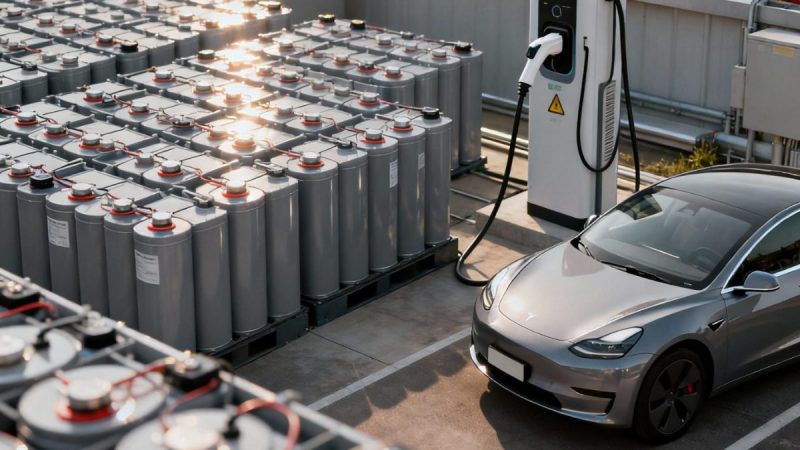How Much Do Electric Car Batteries Degrade? A Comprehensive Analysis

Electric vehicle (EV) battery degradation is one of the most critical concerns for potential buyers, yet recent data reveals the reality is far more encouraging than many expect. This comprehensive analysis examines real-world degradation rates, factors affecting battery life, and what owners can realistically expect over their vehicle’s lifetime.
Current Degradation Rates: The Good News
Modern EVs Show Remarkable Longevity
Recent studies demonstrate that EV battery degradation has improved significantly compared to early electric vehicles. Geotab’s 2024 analysis of 10,000 electric vehicles found that modern EV batteries degrade at an average rate of just 1.8% per year, down from 2.3% recorded in 2019. This improvement suggests that EV batteries could last 20 years or more at current degradation rates.
Most electric cars retain more than 80% of their initial capacity after 200,000 miles, a figure that represents the industry benchmark for “end of useful life” in automotive applications. This threshold is significant because at 80% capacity, vehicles typically still provide adequate range for most daily driving needs.
Real-World Performance Data
Tesla Battery Performance
Tesla’s data provides compelling evidence of battery durability. According to comprehensive studies:
| Vehicle Age | Average Battery Capacity | Miles Driven |
|---|---|---|
| 7 years | 93% capacity | 100,000 miles |
| 10 years | 82.5% capacity | 200,000+ miles |
Nissan Leaf Performance
The Nissan Leaf, one of the earliest mass-market EVs, shows different degradation patterns due to its air-cooled battery system:
First capacity bar lost (15% degradation): Average 3.1 years, 29,000 miles
Fifth year: Most cars retain 10.6 out of 12 capacity bars
Vehicles with liquid cooling systems significantly outperform air-cooled alternatives
Understanding Battery Degradation Mechanisms
Two Primary Types of Degradation
Calendar Aging
This occurs naturally over time, even when the vehicle isn’t used. The Solid Electrolyte Interphase (SEI) layer gradually thickens on the battery’s anode, consuming lithium and reducing capacity. Calendar aging typically causes 1-2% degradation per year, with higher rates in very hot climates.
Cyclical Aging
This happens during charge and discharge cycles as lithium ions move in and out of electrodes. The mechanical stress gradually creates structural changes that reduce capacity. Interestingly, degradation happens fastest in the first 20,000 miles as initial lithium salts react and build the SEI layer, then stabilizes to a slower, linear decline.
Factors Affecting Battery Degradation
Temperature Impact
Temperature plays the most significant role in battery longevity:
EVs in hot climates show accelerated degradation compared to temperate conditions
Extreme cold (below 20°F) can temporarily reduce range by up to 40%
Tesla Model S with liquid cooling shows 2.3% degradation versus Nissan Leaf’s 4.2% with air cooling
Charging Patterns
Charging habits significantly influence battery health:
DC fast charging: Frequent use accelerates degradation, especially in hot climates
Level 2 charging: Gentler on batteries and preserves longevity
Optimal charge range: Maintaining 20-80% state of charge minimizes stress
Usage Patterns
Contrary to expectations, high-mileage EVs don’t necessarily experience greater degradation when controlling for charging frequency and climate conditions.
Battery Warranty Coverage and Costs
Industry Standard Warranties
Most automakers provide substantial battery coverage:
Standard coverage: 8-10 years or 100,000-150,000 miles
Capacity guarantees: Usually 70-75% capacity retention during warranty period
Progressive warranties: Some manufacturers like Tata offer lifetime warranties for first owners
Replacement Costs in 2025
Battery replacement costs vary significantly by vehicle:
| Vehicle Model | Replacement Cost Range |
|---|---|
| Nissan Leaf (40 kWh) | $4,000 – $8,000 |
| Tesla Model 3/Y | $12,000 – $20,000 |
| Ford Mustang Mach-E | $18,000 – $25,000 |
| Premium EVs (Lucid, Rivian) | $25,000 – $30,000+ |
However, battery costs continue declining rapidly. Goldman Sachs Research projects average battery prices could fall to $80/kWh by 2026, representing nearly a 50% decrease from 2023 levels.
Optimizing Battery Longevity
Best Practices for Extended Life
Charge management: Keep the battery between 20-80% for daily use
Temperature control: Park in shaded or climate-controlled areas when possible
Charging habits: Minimize DC fast charging for regular use
Regular maintenance: Follow manufacturer service schedules
Software updates: Install battery management system updates promptly
Realistic Expectations
Modern EV batteries are designed to last the vehicle’s lifetime. The average electric car owner will likely sell their vehicle long before battery replacement becomes necessary.
Second Life and Recycling
Beyond Automotive Use
Even when batteries reach “end of life” for automotive use at 70-80% capacity, they retain significant value:
Second-life applications: Home energy storage, grid stabilization
Extended lifespan: Up to 10 additional years in stationary applications
Recycling value: Materials like lithium and nickel maintain substantial worth
The Bottom Line
Electric vehicle battery degradation, while inevitable, occurs much more slowly than many consumers fear. With proper care and realistic expectations, modern EV batteries can provide reliable service for 15-20 years or more. The combination of improving battery technology, declining replacement costs, and comprehensive warranties makes battery degradation a manageable consideration rather than a prohibitive barrier to EV ownership.
For most drivers, concerns about battery degradation are outweighed by the improving performance, decreasing costs, and environmental benefits of electric vehicles. As battery technology continues advancing and manufacturing scales increase, future EVs will likely show even better longevity than today’s already impressive standards.






